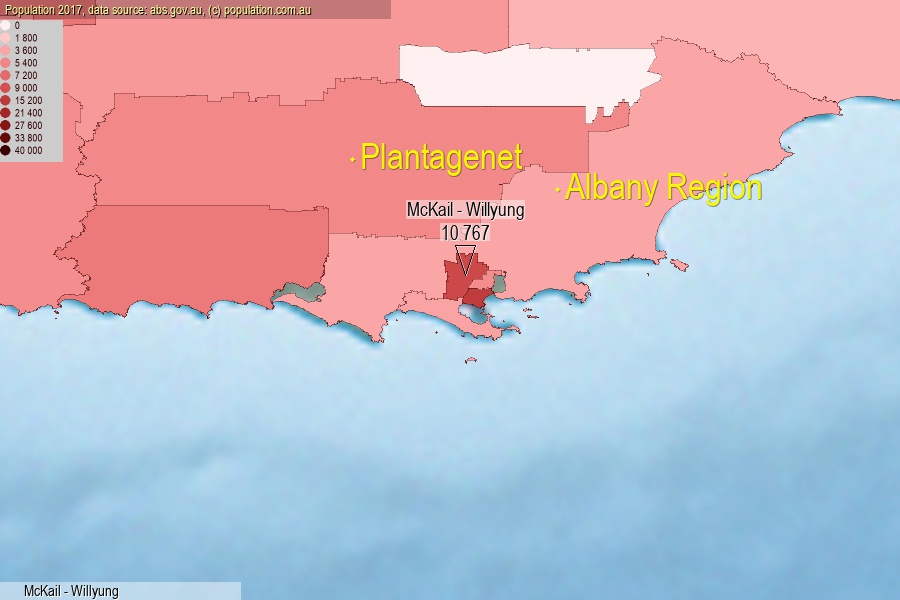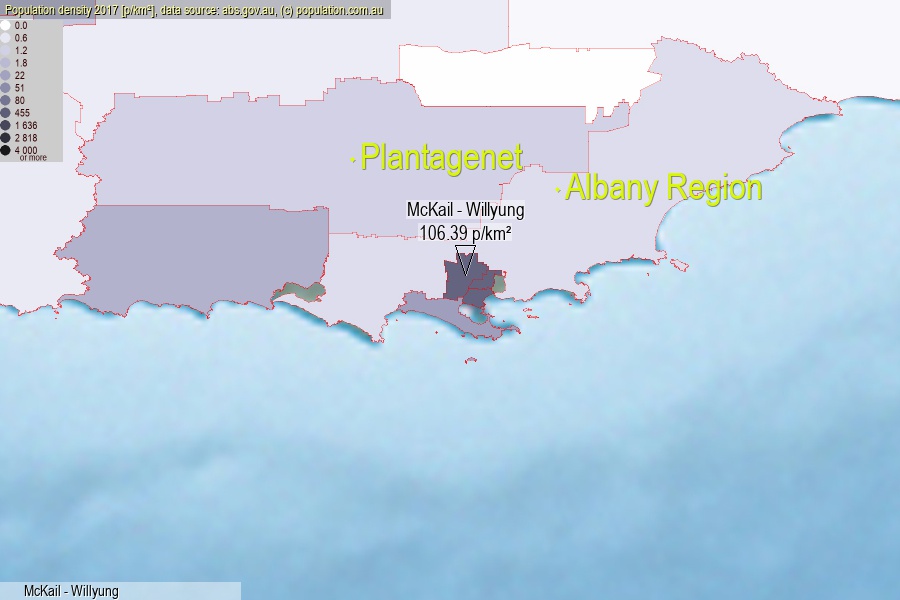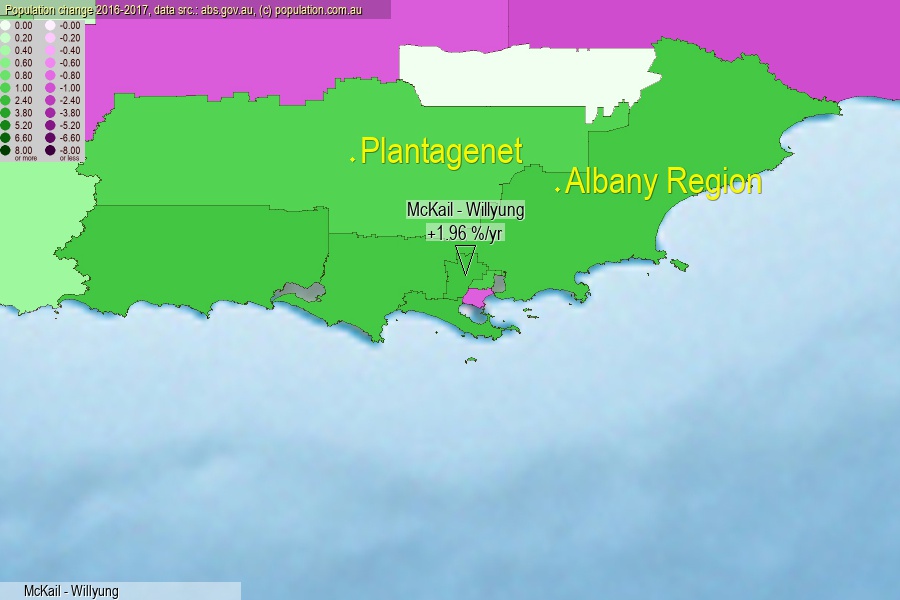 population.com.au
population.com.auLast official estimated population of McKail - Willyung (as Statistical Area Level 2) was 10 767 people (on 2017-06-30)[2]. This was 0.04% of total Australian population and 0.415% of WA population. Area of McKail - Willyung is 101.20 km², in this year population density was 106.39 p/km² . If population growth rate would be same as in period 2016-2017 (+1.96%/yr), McKail - Willyung population in 2025 would be 12 576. [0]



Click to enlarge. McKail - Willyung is located in the center of the images.
Population [people], population density [p./km²] and population change [%/year] [2]
View borders » (new window) [4]
[1991-1992] +1.40 %/Yr.
[1992-1993] +1.61 %/Yr.
[1993-1994] +1.74 %/Yr.
[1994-1995] +2.23 %/Yr.
[1995-1996] +2.47 %/Yr.
[1996-1997] +2.92 %/Yr.
[1997-1998] +3.93 %/Yr.
[1998-1999] +3.64 %/Yr.
[1999-2000] +1.14 %/Yr.
[2000-2001] +2.77 %/Yr.
[2001-2002] +1.96 %/Yr.
[2002-2003] +1.51 %/Yr.
[2003-2004] +0.94 %/Yr.
[2004-2005] +2.44 %/Yr.
[2005-2006] +3.11 %/Yr.
[2006-2007] +2.07 %/Yr.
[2007-2008] +3.49 %/Yr.
[2008-2009] +3.25 %/Yr.
[2009-2010] +2.41 %/Yr.
[2010-2011] +2.04 %/Yr.
[2011-2012] +2.40 %/Yr.
[2012-2013] +2.04 %/Yr.
[2013-2014] +3.79 %/Yr.
[2014-2015] +0.55 %/Yr.
[2015-2016] +0.14 %/Yr.
[2016-2017] +1.96 %/Yr.
[0] Calculated with linear interpolation from officially estimated population
[1] Read more about SA2 and Australian Statistical Geography Standard (ASGS) on abs.gov.au
[2] Population data from Australian Bureau of Statistics (Population and density: 2017; change: 2016-2017)
[3] Digital Boundaries: Australian Statistical Geography Standard (ASGS) 2016.
[4] Border coordinates are simplifyed using Ramer-Douglas-Peucker algorithm.